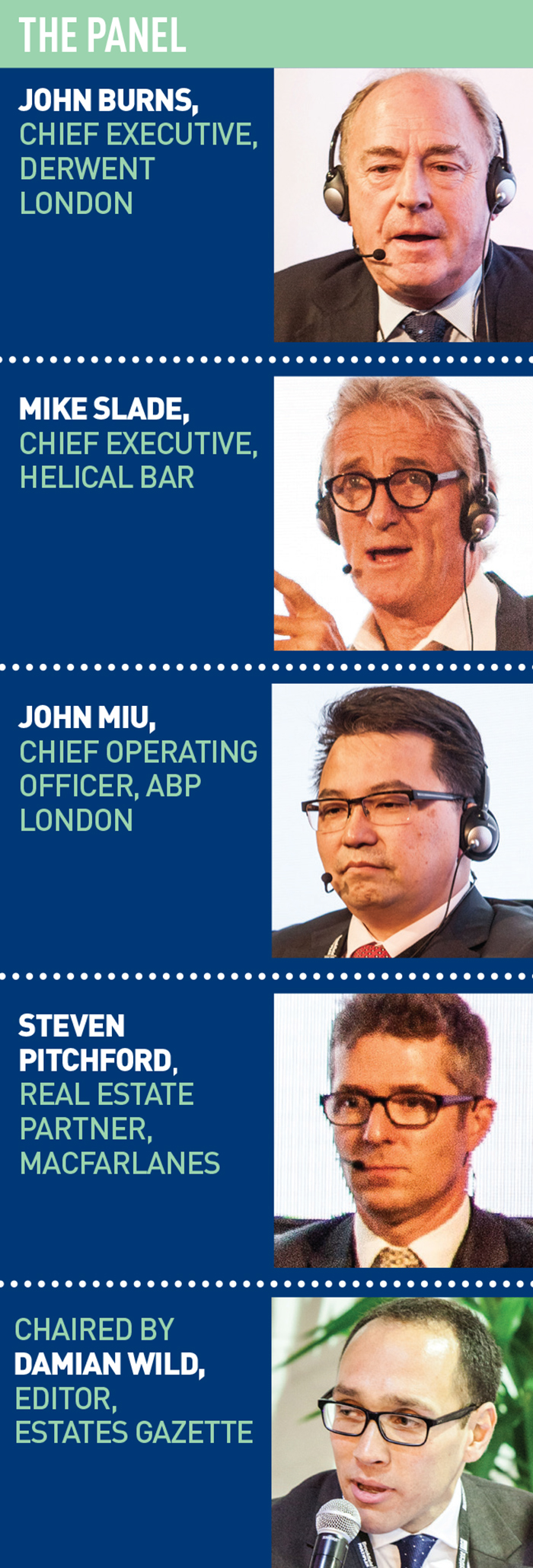 The story of booming rents in space-starved Mayfair and a flocking of the trendy to the now perhaps not-so-affordable fringes is well told. At an Estates Gazette debate with some of London’s leading developers at MIPIM UK last week, hosted in association with Macfarlanes, occupiers’ needs for affordable, well-connected, attractive space remained a hot topic.
The story of booming rents in space-starved Mayfair and a flocking of the trendy to the now perhaps not-so-affordable fringes is well told. At an Estates Gazette debate with some of London’s leading developers at MIPIM UK last week, hosted in association with Macfarlanes, occupiers’ needs for affordable, well-connected, attractive space remained a hot topic.
According to the latest research from EGi’s London Offices research team, presented by senior researcher Graham Shone, occupiers looking for more affordable space would be able to find a 60% reduction in rents by looking outside London’s core. However, with that reduction in price came a compromise on quality and size.
The opportunity for developers and landlords was clear, as the panel, which included Derwent London chief executive John Burns and Helical Bar boss Mike Slade, discussed.
“We are in a fabulously good situation in terms of supply and demand for the next two years,” said Slade. “As rents grow in the centre, the outward lying alternatives come far more into the reckoning: going east, south to Croydon, and to the north you might even find Tottenham coming into play – more than its football team!”
Slade believed rents outside the core would rise to £50 per sq ft, citing the example of Helical Bar’s One Kingsway in Hammersmith, W6, where it has recently secured a rent of £55 per sq ft. Rents in the building just two years ago were £24 per sq ft, he said.
The west, he said, would lead the way in terms of growth outside the core, with the east taking a little longer.
John Miu, chief operating officer at ABP London, which is seeking to create a new heart of London at its £3bn Royal Albert Dock project, was unsurprisingly backing the east for growth.
He said ABP was creating a platform in east London for all the businesses from Asia to come and set up home.
“We feel that Royal Albert Dock is the right place,” he said. “It is served by City Airport and with the coming of Crossrail there is no limitation to the possibilities in terms of transportation.”
He added: “We can see the potential to grow in east London. There are a lot of talented people in east London and the east of England. Linking up with Cambridge is also very important. We can see all the business from abroad benefitting.”
In terms of value, Miu believed the docks would offer the best. He said that rents in the area in 2018 would be around £35 per sq ft and because ABP’s project will sit within an enterprise zone, occupiers will not have to pay business rates for five years. He claimed this would make office costs in the area as much as 50% cheaper than Canary Wharf, just one train stop away.
For Derwent London boss Burns, occupiers choose locations based on communication, connection and value.
“A lot of decisions are made these days where it is not the chief executive and chairman who say where they are going to go. In the war for talent, you have got to have space that your workforce is happy with,” said Burns. “But everything is a matter of pricing. You have got to look and see what the pricing is.”
He added: “We think there is a flight to value. Demand for space is good. People will look for value, they will look for exciting space. They must have communication. They are spending most of their lives working and socialising and that is a key factor in offices.”
Steven Pitchford, real estate partner at law firm Macfarlanes, agreed: “People now spend a long time working in the buildings they are in and the sheer quality of the space has become very important.”
“It is all about tenants,” added Burns. “I don’t think there has ever been a market like this where there has been such a depth of tenants. Companies are now looking ahead, knowing the space they are going to need in a couple of years. For us, this really drives everything. Tenant demand is key and as long as that demand continues London will do well in the outer regions.”
Click here to listen to the debate in full
Click here to download the latest copy of Estates Gazette’s London Offices Market Analysis











